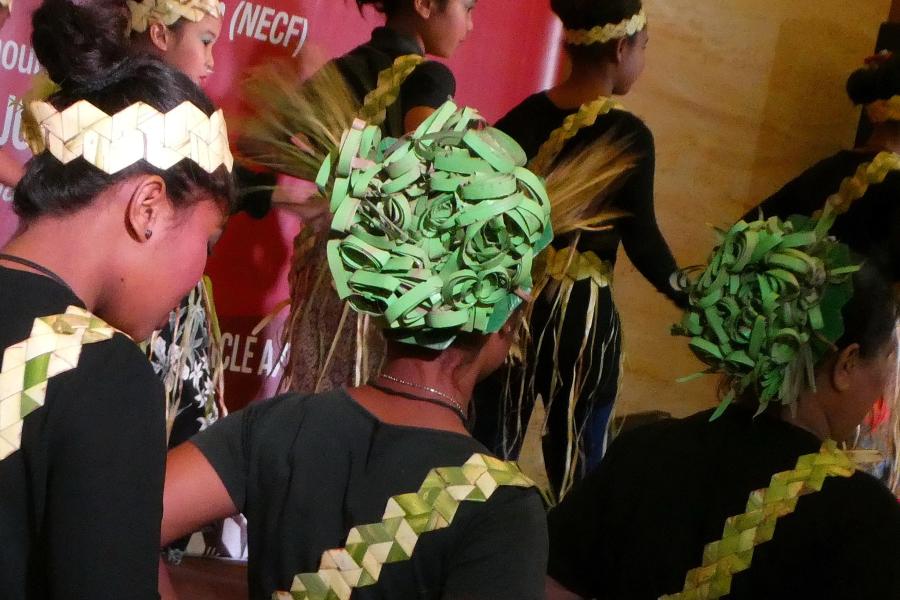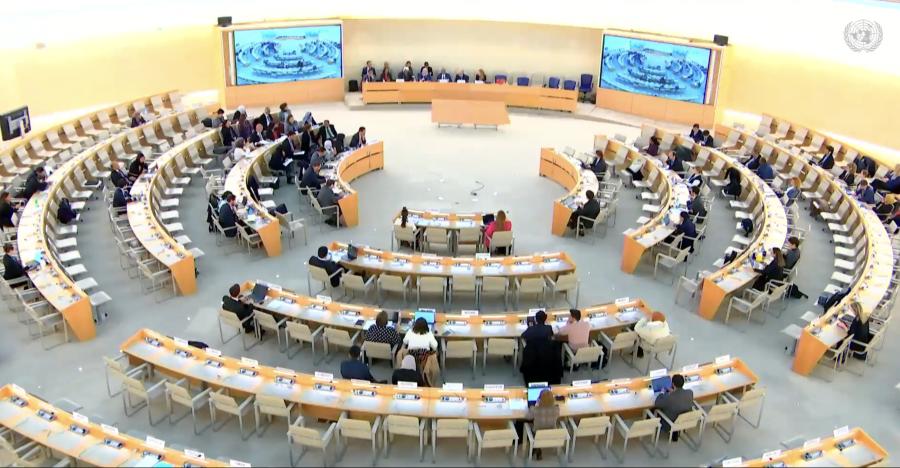The Batek De' (a Semang group, or Malayan Negritos) numbered about 300 persons in 1981. They have lived in the watershed of the Lebir River in southeastern Kelantan since at least 1874, when they were encountered by the Russian naturalist and explorer Nicolas Miklucho-Maclay. They probably had inhabited the area for hundreds of years already.
Between the late 1800s and the end of World War II, they shared their territory with Malay farmers who lived along the major rivers. In the early 1950s, however, all the Malays were resettled by the government in "new villages" on the lower Lebir to remove them from the possible influence of the Communist guerillas then operating in the remote jungle areas.
Since the 1950s the Batek have been the only permanent inhabitants of this 720 square mile area. Although these lands are their traditional homes, they do not have any legal title to them or control over them. Legally, the land belongs to the state, and the Batek are merely squatters, although they, and the other Orang Asli (Aborigines) in Kelantan, normally have been allowed to occupy state land when it was not being used. However, they have no power to prevent the state from using the land at any time and no way of ensuring that their own interests in the land are considered.
Up to the late 1960s most of the Batek De' lived by a combination of hunting and gathering and trading forest produce for agricultural products and manufactured goods. During the 1970s a number of families moved to Post Lebir, a federal resettlement project sponsored by the Malaysian Department of Aboriginal Affairs [Jabatan Hal Ehwal Orang Asli (JOA)], where they joined a small number of Batek of other dialect groups who were already settled there. By 1981 about 160 Batek De' were living there at least part of the time.
At Post Lebir the JOA obtained several hundred acres of land from the state of Kelantan but only on a Temporary Occupation License which must be renewed annually. The state has never consented to establish a permanent Aboriginal Reserve in the area.
The JOA has built a school, medical post, and other facilities at Post Lebir and has supplied the settlers with seeds and shoots for growing rubber trees and food crops. The JOA has also provided a small herd of cows. The Batek settled at Post Lebir now derive a portion of their support from their crops and from rations and wages given by the JOA. However, most of their income still comes from the collection and sale of forest produce, especially rattan and gaharu wood, a resinous wood used in making perfume and incense, many of the men from Post Lebir, and some of the women, spend at least half of their time collecting forest produce.
The remainder of the Batek De' have continued to lead a fully nomadic existence in the upper reaches of the Lebir, Aring, and Relai rivers. They too are engaged in the collection of rattan and gaharu wood. They subsist on purchased foods, such as rice and flour, and on wild tubers and fruits, which they collect whenever purchased supplies run out, and fish and game which remain their major sources of meat. Thus both the semi-settled and nomadic Batek De' depend upon the natural resources of the tropical rain forest.
Since independence in 1963, development in the Malay Peninsula has consisted of replacing the natural rain forest with commercial export-producing crops, usually rubber trees and oil palms. Grown in both large plantations and small family-owned plots, these cash crops are subsidized through federal and state government projects.
The Malaysian strategy of natural resource development is founded upon the assumption that on level or moderately sloping lands, agriculture always represents an economically superior use to forestry.
Cutting logs from the forest is, thus, a necessary first step in converting the land to more profitable uses.
The clearing of the forest, however, is also a source of enormous profits both to the companies which cut and process the logs and to the agencies that sell the logging concessions. In Malaysia the state governments grant logging concessions on public lands. These concessions provide a major source of revenue to state governments that is independent of federal control. Thus, logging is an end in itself as well as a preliminary step in the development of commercial agriculture.
A number of development schemes are planned or now being implemented in the Lebir River area. These federal (FELDA) and Kelantan state (KESEDAR) sponsored development schemes are designed to provide family homesteads for landless Malays, but there is no provision for participation of Batek in them, nor is there any desire on the part of the Batek to be included. While only about half of the available land in the area is to be used in these colonization schemes, because of the immediate profits to be gained from logging, the whole of the area is being divided into concessions and sold to logging companies. The only state land in the area that will be excluded is that inside the Taman Negara.
Thus, colonized areas will be surrounded not by virgin forest but by wasteland left from logging. While logging companies agree to undertake a certain amount of reforestation in their concession areas it is well-known in Kelantan that compliance is minimal. In general, the logging done is clear-cutting rather than selective cutting, and no attention is paid to preventing erosion or removing the debris left after the forest is destroyed. After only a few years of erosion, the land may become permanently damaged and unsuitable for any productive use. Erosion will contribute, of course, to increased amounts of silt being washed down the Lebir, eventually resulting in a build-up of silt deposits in the lower Kelantan River as well. Perhaps it is poetic justice that the decision-makers in Kota Bharu who have produced this logging policy will soon become victims of the increased flooding that will be one of its main consequences.
The logging of the Lebir River basin is proceeding at a rapid and apparently accelerating rate. In 1970 there were almost no roads of any kind on the Lebir above Manek Urai. By 1975, logging roads had been built up both sides of the Lebir beyond the mouth of the Relai River. By 1981 a vast network of logging roads reached into the headwaters of the Aring and Relai rivers and extended up the west side of the Lebir to within six miles of the national park. In addition, a major road from Kuala Krai to Gua Musang, financed domestically and with foreign aid, is well on its way to completion. According to the Third Malaysia Plan (1976-1980), this road is intended to "serve the exploitation of timber resources and help promote the establishment of integrated timber-based industries in the Gua Musang and Kuala Lipis area". The Lebir River basin is now dotted with logging camps, and hundreds of trucks travel up and down the Lebir each day taking logs to the mills in Pahi and Kuala Krai.
By the end of 1980 about a third of the area traditionally occupied by the Batek De' was already clear cut. An additional third had been sold as timber concessions. It is not unreasonable to suppose that the entire area outside the national park will be deforested by the end of this decade.
The loss of the forest will certainly cause difficulties for the Batek De', leading to a decline in their standard of living. At present they have two possible avenues of retreat. The nomadic Batek who are willing to accept a sedentary way of life and increased interference from outsiders and government agencies can join their settled relatives at Post Lebir. The JOA will probably be able to get enough additional land there to accommodate new arrivals. But the end of the forests will mean the end of the major source of cash income for the Post Lebir people. They will be forced to subsist entirely on their own crops and whatever supplements they can get from the JOA. This may well cause malnutrition and a general demoralization which will lead young Batek to leave the settlement and drift into the towns looking for employment. Already a number of young men from Post Lebir have recently joined the Malaysian army, a trend which could well increase.
The more conservative Batek De', living in the headwaters of the rivers, may continue to follow a regime of mixed foraging and trade in forest produce. However, they are gradually retreating upstream as the forest is cut, and some groups now spend most of their time in the national park. It may be possible for them to continue their present way of life for some time.
Under Malaysian law, the Orang Asli have certain special rights, including the right to hunt protected species of game for their own consumption. The Game Department, which administers the national park, does not object to their living in the park and exploiting the natural foods there. At the moment they do not even prohibit the extraction of rattan and gaharu wood for trade. But if a hundred or more Batek began living permanently in the park, they would soon alter its ecology. Then the Game Department would have to prohibit or regulate some of the activities that are essential to the subsistence of the nomadic Batek. Probably more of them would then be forced to settle at Post Lebir. Others might join their cousins, the Batek Iga', who work as guides and firewood collectors at the national park headquarters at Kuala Tahan in Pahang. Thus, in the face of deforestation, while the national park may delay, it cannot prevent the demise of the traditional Batek way of life.
Article copyright Cultural Survival, Inc.


